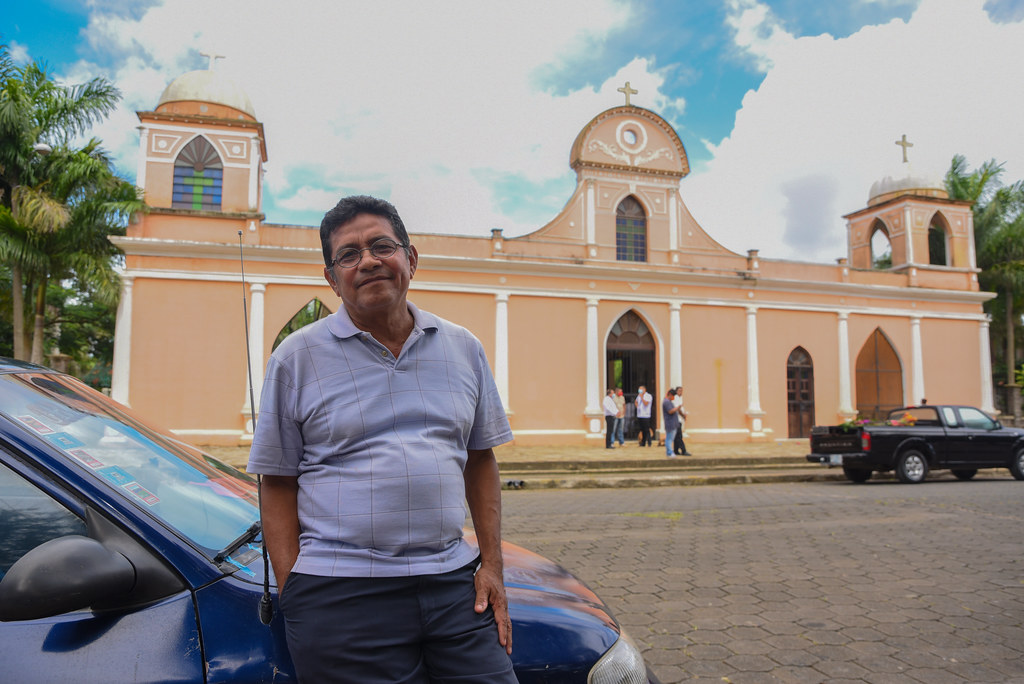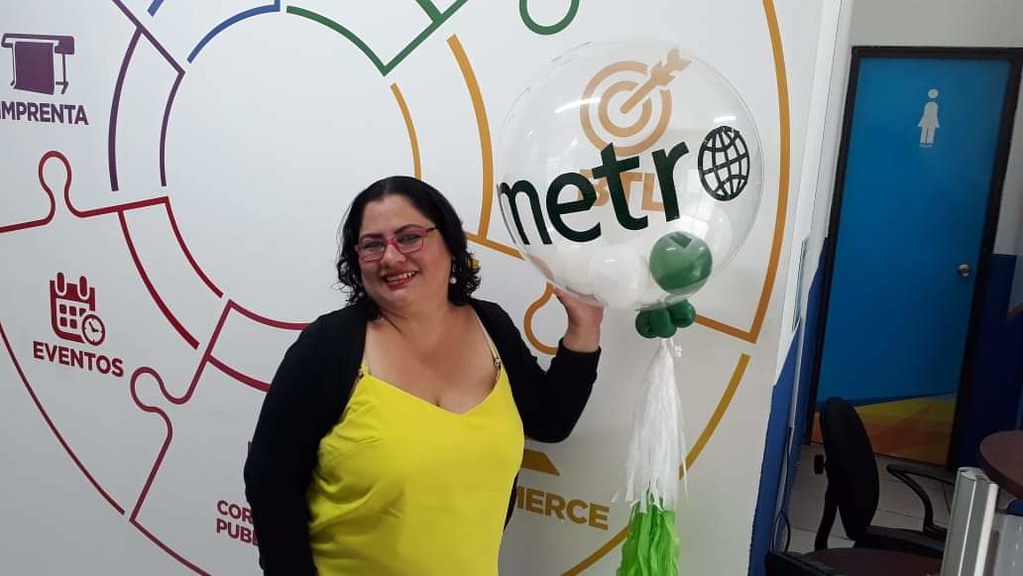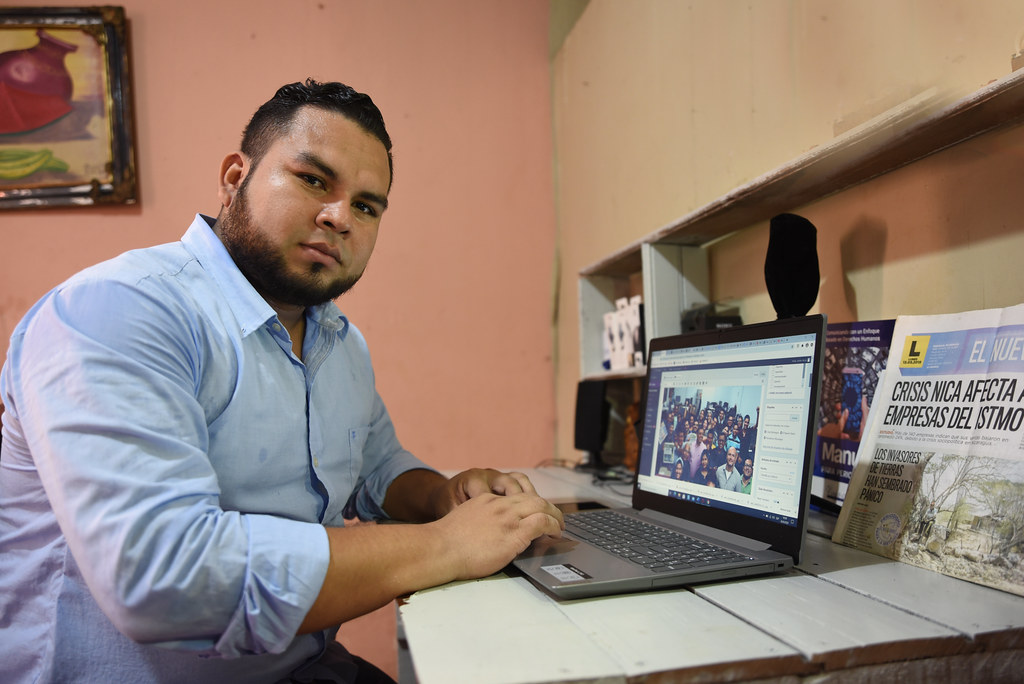1 de octubre 2020

Ortega Grants Chinese Company a Huge Mining Concession

PUBLICIDAD 1M
PUBLICIDAD 4D
PUBLICIDAD 5D
A year after its closing, those who worked in one of Nicaragua's oldest newspapers have gone through unemployment, migration and entrepreneurship

Journalists of El Nuevo Diario took this photo on the day of its closing. They are holding the last edition of the newspaper. Photo: Courtesy
Last year, on the night of September 26, about 180 workers of El Nuevo Diario went to bed without knowing that they would soon be unemployed. They discovered the news the next day, early in the morning, when an article that had been published on the website had begun circulating. The decision had been made, and it was final. The newspaper was closing.
Was it the end of one of the main printed newspapers in Nicaragua, a company with 39 years of history behind it? What would happen to its workers? Nobody knew the answer.
That morning, the staff was called for a meeting at 9:00 am. Unlike other days, everyone began to arrive at the facilities before eight in the morning, and despite the uncertainty, there was optimism: for some time, there had been talks about suspending the print edition, due to the blockade of printing material that the Sandinista government had been imposing for thirteen months. But it had been said that the digital edition of El Nuevo Diario would remain.
To cheer each other up, colleagues began greeting each other with applause. That moment became one of the most emotional scenes of a workday that never actually started.
Any kind of hope was crushed when the editorial director, Douglas Carcache, addressed the team with a breaking voice: “The closing is final. There is no possibility of a digital edition”.
Carcache thanked the staff for the long working hours and the dangerous news coverage that journalists and photographers did during the protests of the civil uprising of April 2018. The editor also congratulated the enormous work of a team composed of mainly young people, and addressed a concern that many of them had: economic settlements were ready.
Corporate emails had been blocked and the requirement to receive the settlement was to return the mobile devices that had been assigned by the company.
The day before the closing, photographs and illustrations had been made for the feature article of the Friday 27 edition. It was a report that reconstructed the most macabre femicides perpetrated in the last decade in Nicaragua. Then, the night came, and the routine to finish the print edition seemed to be running as usual. One by one, the journalists who had finished their shift began to leave, so that around midnight, only the closing team remained. But things were different that night. The closing team was dismissed at 8:30 pm, and only the front page designer remained.
Originally, the proposal for the front page was to write, in small letters, the names of all the women that had been murdered in the last decade: 630 in total. A historic cover. But throughout the night, the cover experienced a change that made history for a completely different reason.
The closure of El Nuevo Diario was preceded by two events that involved companies that had bought the newspaper in the midst of a financial crisis, back in 2011:
On September 5, 2019, media outlets linked to Daniel Ortega’s government launched a campaign against one of the directors of Banco de la Producción (Banpro), a national bank, accusing him of being part of a money-laundering network.
Two weeks later, on September 24, a delivery vehicle from Ardisa - El Nuevo Diario’s commercial printing company - was stopped by the National Police for supposedly transferring flyers with political messages against the government, which - the media outlets said - had been requested by a third party.
After that incident, the closing team spent several nights stressing out and fearing at the possibility that the National Police would occupy the facilities during the night, given that, less than a year ago the same had happened to CONFIDENTIAL and 100% Noticias, two other independent media outlets.
To this day, the real reason behind the closing of ND Medios (the company that managed El Nuevo Diario, Q’hubo, Metro Nicaragua, and Maje) is unknown. However, many workers believe that the decision had been made days before the news became official, as they had been ordered to use their paid holidays. And, a month earlier, an inventory of their equipment had been made.
A year after that remarkable moment in the history of Nicaraguan media, there is still anger and nostalgia among former workers who became unemployed overnight. Some of them decided to emigrate to other countries or to create independent digital newspapers. Others are still unemployed.

Óscar Sánchez, former photojournalist at El Nuevo Diario, has been unemployed since the closing of the newspaper in 2019. Photo: Nayira Valenzuela | Confidencial
Oscar Martín Sánchez Valdivia, 56, known among his colleagues as “risita” (meaning “giggle”) or “professor”, is the photographer who, amid bullets and tear gas bombs, captured the most shocking images of the 2018 repression for El Nuevo Diario. Among them is the first photograph of a sniper firing at protesters on May 30, 2019, the day that thousands of Nicaraguans marched in different cities to join the mourning of mothers who had lost their children while protesting against the Ortega-Murillo regime.
Oscar Sánchez has not found a job yet. His age and the lack of his own photography equipment have been the main obstacles. “I have knocked on all the doors, but no media organization has hired me, not even as a driver.”
Sánchez takes care of three children and his wife, who suffers from lupus, and is in a delicate condition at a hospital after being infected with Covid-19.
“Some colleagues have helped me with basic needs and sometimes, with money. They ask me: how is it possible that they (El Nuevo Diario) left you on the street? Sometimes I take the car and make private trips, but each ride is only worth 10 córdobas. To earn 300 córdobas, I have to work for 24 hours. I’m practically living off charity,” said the photographer.
His family used to help him with his expenses, but one of the siblings that would occasionally pay for his basic needs passed away due to Covid-19 a few months ago. His oldest son, who worked at the International Airport, lost his job due to a reduction in staff.
Sánchez worked at El Nuevo Diario for 16 years. The day of the closing, “giggle” was on vacation and heard the news via phone call. He never thought that the many times he “exposed his life” to capture the most iconic cover photos “would be in vain”.

Karla Tórrez, a journalist with more than two decades of experience. She is the former editor of Metro Nicaragua. // Photo: Courtesy
The closing of ND Medios did not only mean the closing of El Nuevo Diario, but also that of Metro Nicaragua, the tabloid newspaper that was distributed for free in the streets of Managua. The general editor of this newspaper, Karla Torrez, feared that due to the lack of paper they would suspend the circulation of the publication, so she analyzed the possibility of migrating.
Torrez’s fear materialized. She was left without a job, with debts to pay and having to support her mother as well as taking care of two underage children. She withdrew $ 1,500 from her settlement and bought a plane ticket to go to Spain, where she had relatives and friends who welcomed her in November 2019. In December, she got a temporary job.
“Currently, I work as a companion to an elderly woman, which is different from domestic work. I am only in charge of giving her the medication and accompanying her in her daily activities. I feel good, I am not embarrassed about saying where I work, as long as it’s dignified,” says Tórrez, who has more than 20 years experience in printed journalism.
Despite having worked at El Nuevo Diario in the midst of the Nicaraguan socio-political crisis, Torrez does not plan to return to her country until the right conditions are in place. “I have contemplated returning once I pay my debts,” she says.
She also adds that she would no longer work in journalism when she returns to Nicaragua. “It would be to start a business or dedicate myself to something else, I no longer plan to do journalism,” she says.

Lesther Arcia, former journalist at El Nuevo Diario, is now a member of the founding team of IP Nicaragua. // Photo: Nayira Valenzuela | Confidencial
To avoid unemployment, some journalists at El Nuevo Diario looked for a way to create a digital space to report on the situation of Nicaragua, as it is the case of Lesther Arcia, who joined nine other colleagues in the adventure of creating a new informative digital platform.
“When I saw the publication (of the closing) on social media, I couldn’t believe it. I thought we were going to continue working in the digital edition because the newspaper was getting stronger in technical issues (...) I was hoping they would give us the good news the next morning, but that was not the case,” Arcia recalls.
In April 2020, the website of IP Nicaragua was born. It is described as a “platform where the intention is to denounce what the government and the opposition are doing wrong,” according to Arcia, director of the news outlet.
The years that he worked for El Nuevo Diario taught him that “even though you are a small media outlet, you must show the best quality”, as it happened when El Nuevo Diario went from having 38 to only eight pages, due to the regime’s blockade of printing materials.
These days, Arcia no longer organizes the celebrations for the birthdays of his coworkers, as he used to do when we work for El Nuevo Diario. Oscar Sanchez or “giggle” no longer has to try his luck between the bullets and tear gas of those who repress citizens, although he’s trying to make ends meet amidst unemployment. And Karla Torrez, living more than 8,500 kilometers away from Nicaragua, no longer walks the corridors of the newsroom where she chose the photographs for each new edition of Metro.
For the last group of journalists and photographers who faced government harassment, El Nuevo Diario, which was their last refuge to practice journalism, only remains in their memory.
This article has been translated by Ana Maria Sampson, a Communication Science student at the University of Amsterdam and member of our staff*
PUBLICIDAD 3M
Confidencial es un diario digital nicaragüense, de formato multimedia, fundado por Carlos F. Chamorro en junio de 1996.
PUBLICIDAD 3D